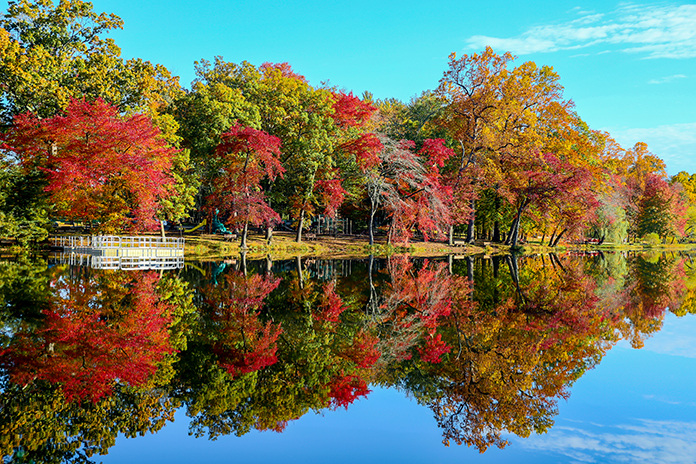
NEW JERSEY – For the past three winters, La Niña weather patterns have brought record-low snowfall to New Jersey.
This winter, forecasters have confirmed an El Niño weather pattern which could potentially bring lots of snow for the first time in years.
Dr. David A. Robinson, New Jersey State Climatologist and Rutgers University Professor, described how the last couple of winters brought little to no snow.
“Last winter in particular was mild and snow free for south Jersey. It was the least snowy winter on record, and we go back to 1895’s winter. When you get to the central and northern counties it was definitely one of the 10 least snowy winters,” Robinson said. “There was low snow fall, mild temperatures. We had two cold blasts. In and out quickly, in December and February. But nothing stuck, we had no long periods of cold weather. It was also a quiet winter, not many coastal storms.”
“The winter before was an interesting one. It wasn’t particularly snowy and stormy, but there were two storms that affected south Jersey, one in early January and one in late January. Again though, not exceptionally cold and snowy outside of those two events in January. We’ve not been challenged all that much the last three winters,” Robinson added.
In recent years, the autumn season has been nowhere close to “sweater weather,” with temperatures sometimes reaching into the 70s or even 80s. Robinson explained how despite the warming winters, they have yet to see it affect the average snowfall in New Jersey.
“The one thing we’ve found, despite our winters warming, we’re on the average – not getting less snow because we’re still getting big snow events. In coastal New Jersey, if you’re getting 18 inches of snow in a storm, that’s 2/3 or more of your average annual snow fall. So, it only takes one event to sometimes make a memorable winter,” Robinson said.
El Niño is characterized by unusually warm ocean temperatures in the Equatorial Pacific and influences conditions in the tropics. The climate pattern can impact the weather all over the world.
Robinson said El Niño has some influence in the mid-Atlantic but not all too much.
“When it comes to winters during these El Niño periods, some are stronger and some are weaker. Each one has its own personality. Therefore, no two are alike in the middle latitudes. It’s rare to get back-to-back El Niño winters,” Robinson said.
El Niño winters tend to favor a coastal storm track, nor’easters. Robinson explained how some of New Jersey’s biggest snow storms tend to come with nor’easters.
“The storm tracks off the coast throws moisture into New Jersey and if you can tap some cold air coming down from Canada you’ve got the ingredients for a snowstorm,” Robinson said. “We’ve had some memorable snow storms in El Niño winters, but some of our least snowy winters in New Jersey have been El Niño winters because despite the coastal storms we haven’t been able to get the cold air here in time.”
So how much snow is New Jersey expected to get this winter? According to Robinson, it’s hard to predict at this time.
“Essentially what we’re looking at for this winter, we worry about nor’easters, whether they’re wet or white because there’s coastal flooding and beach erosion. So, we really need to keep an eye out for coastal storms this winter,” Robinson said. “It terms of getting hit with a big storm, the potential is there. But again, everything has to fall into place, the cold and the moisture.”
For coastal New Jersey, there’s even more factors that play a part to result in a big snow storm. If the winds turn onto the coast just a little bit from the east, you bring in enough warm air and it goes to rain, compared to inland where it’s snowing.
“With coastal New Jersey, it’s even more challenging because everyone who lives along the coast knows it’s hard to maintain snowfall during a storm,” Robinson said. “So, if you think I know how much it’s going to snow this winter, if you think anyone knows how much it’s going to snow in coastal New Jersey, they don’t.”
Despite not knowing how much snow New Jersey will receive this year, Robinson said the state will definitely receive more snow than last year’s mild winter.
“The fact is, we need to be prepared. In an El Niño winter it really benefits to be prepared because we have in the past been hit with very significant snow storms. But this should not be a persistently snowy, cold winter. That is not an El Niño signal,” Robinson said. “Even with the warming, we still haven’t gotten to the point where so many of our weather systems that in the past would have been snow, are now rain. We have not reached that point yet here in central/north Atlantic. We’re beginning to see signs of that in the southern part of the country.”
“Although we cannot predict the exact amount of snow, we know we will have more snow than last year and it all depends on the El Niño weather pattern,” Robinson added.






